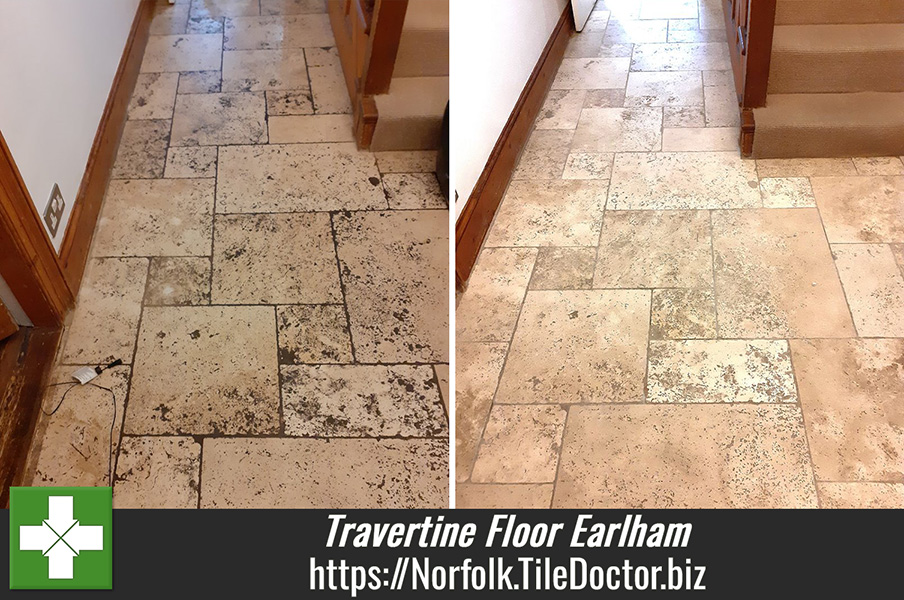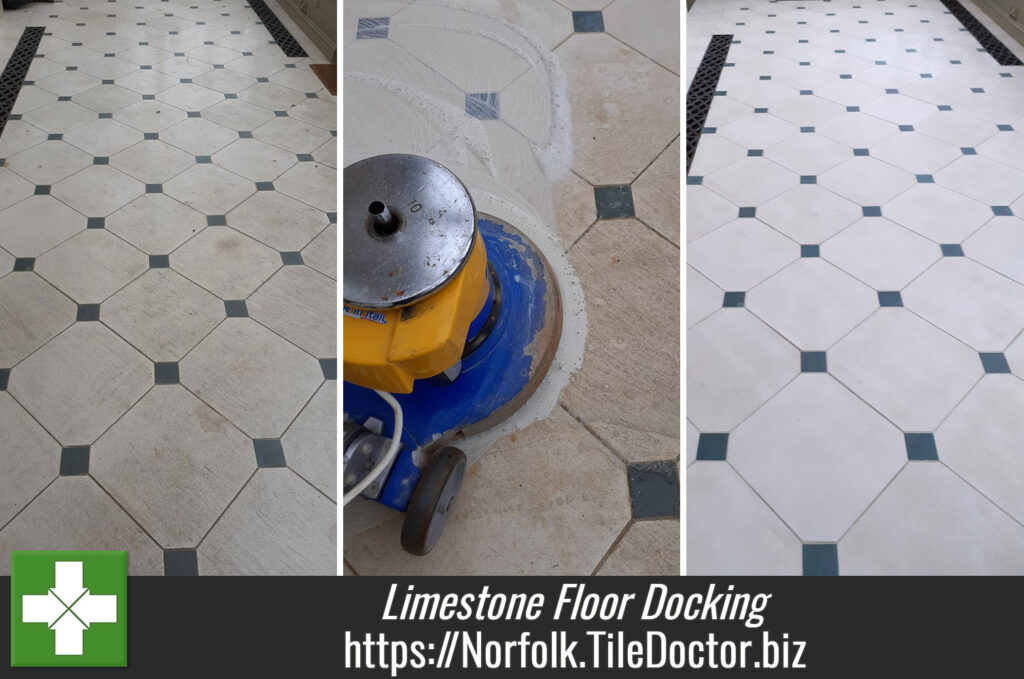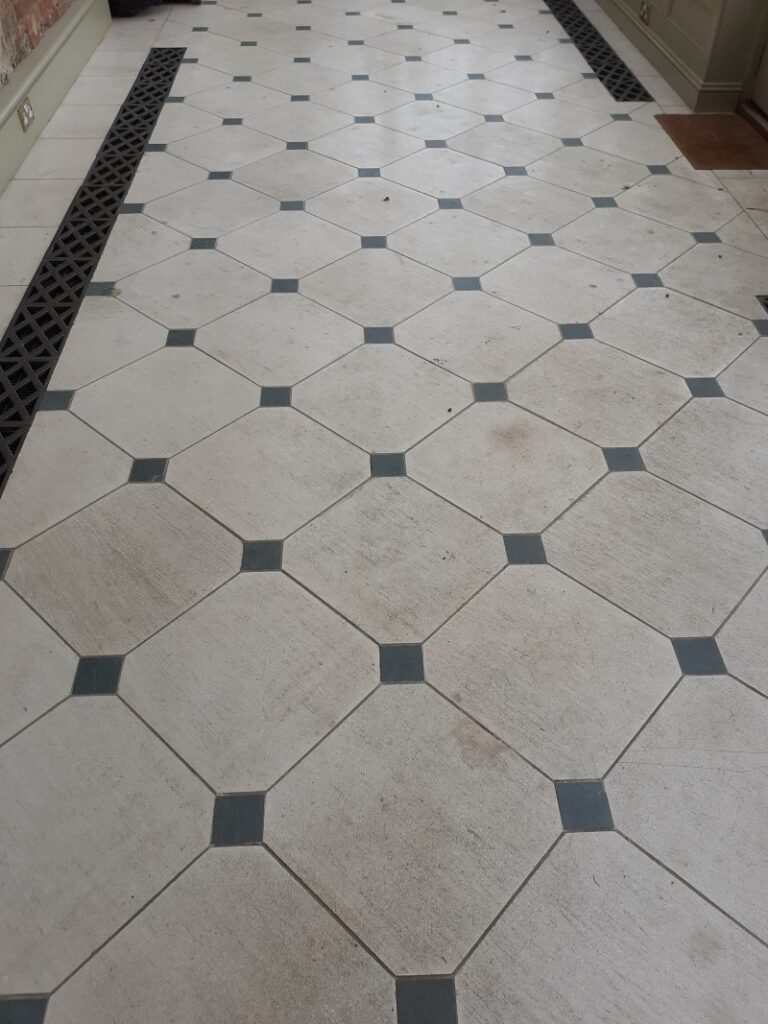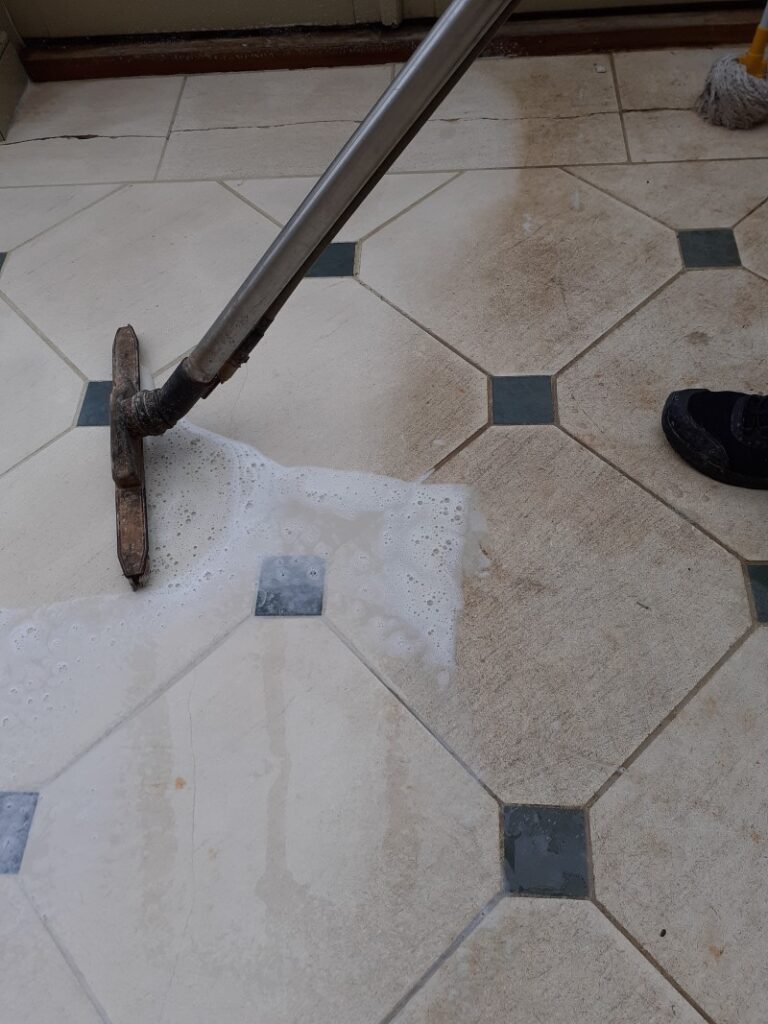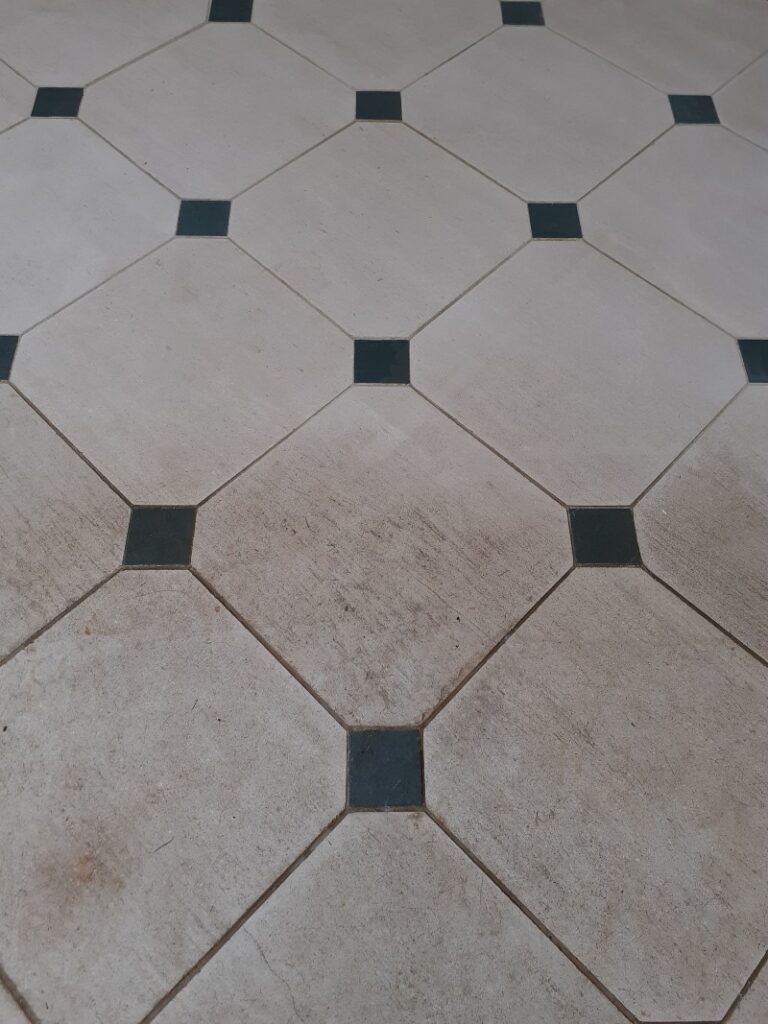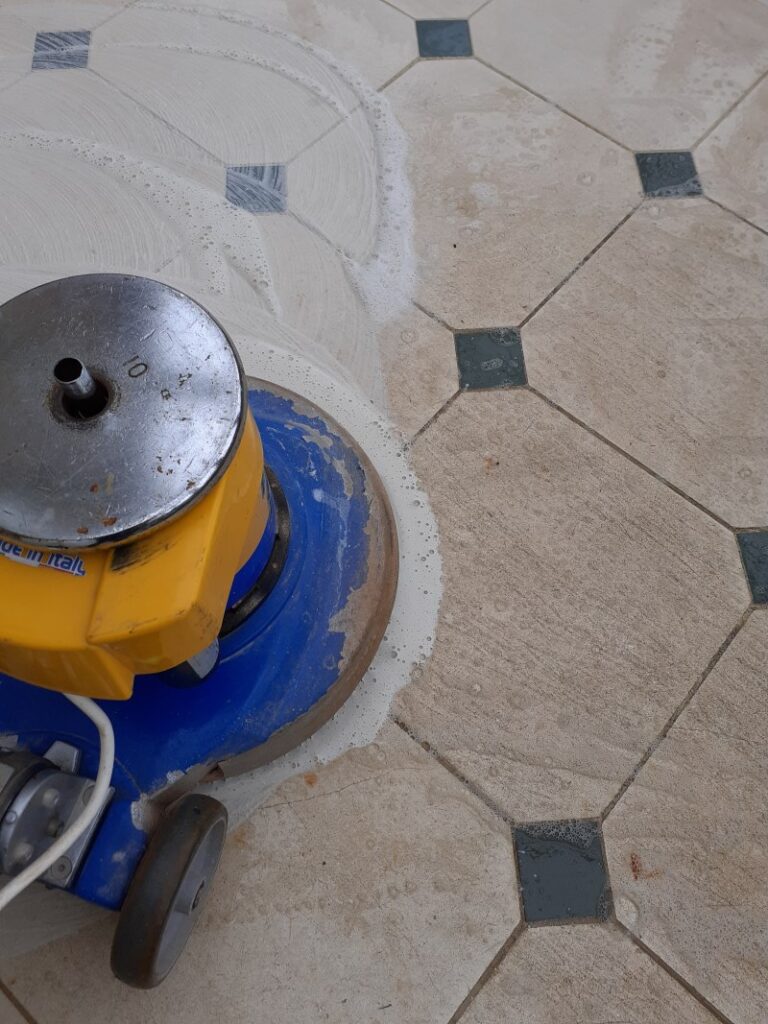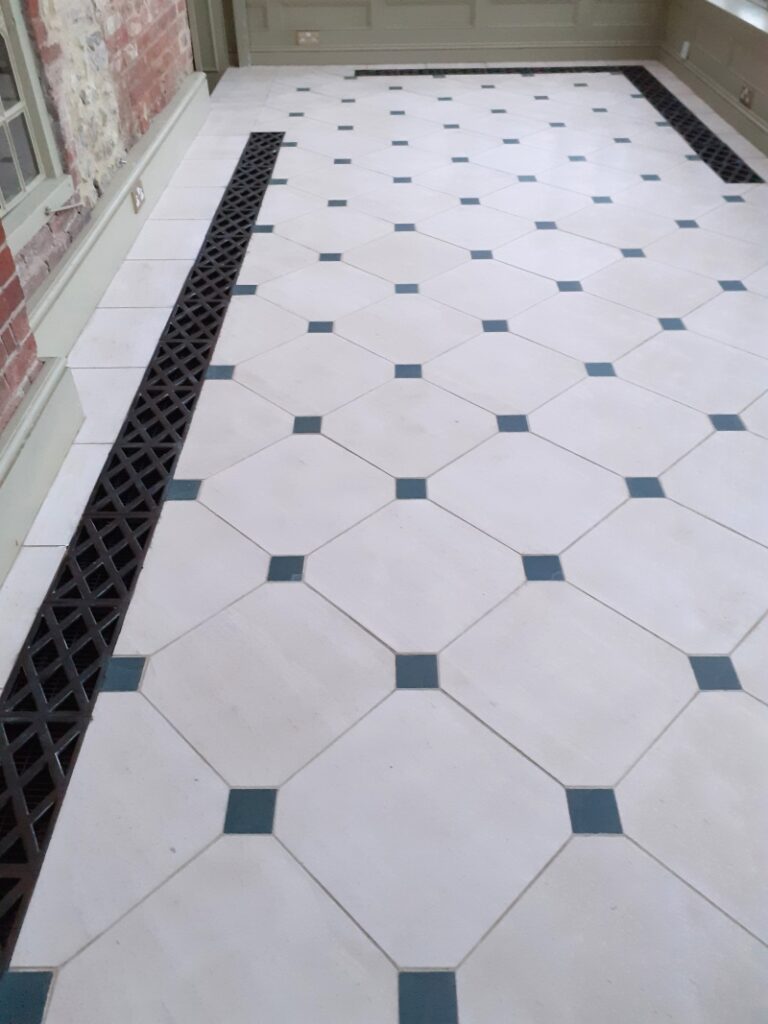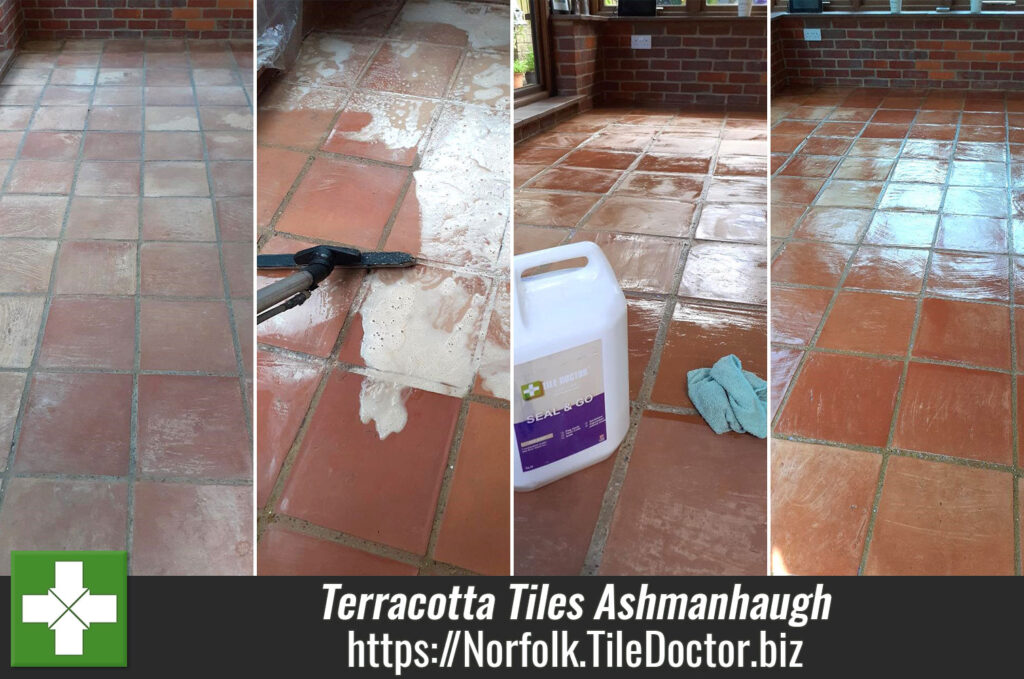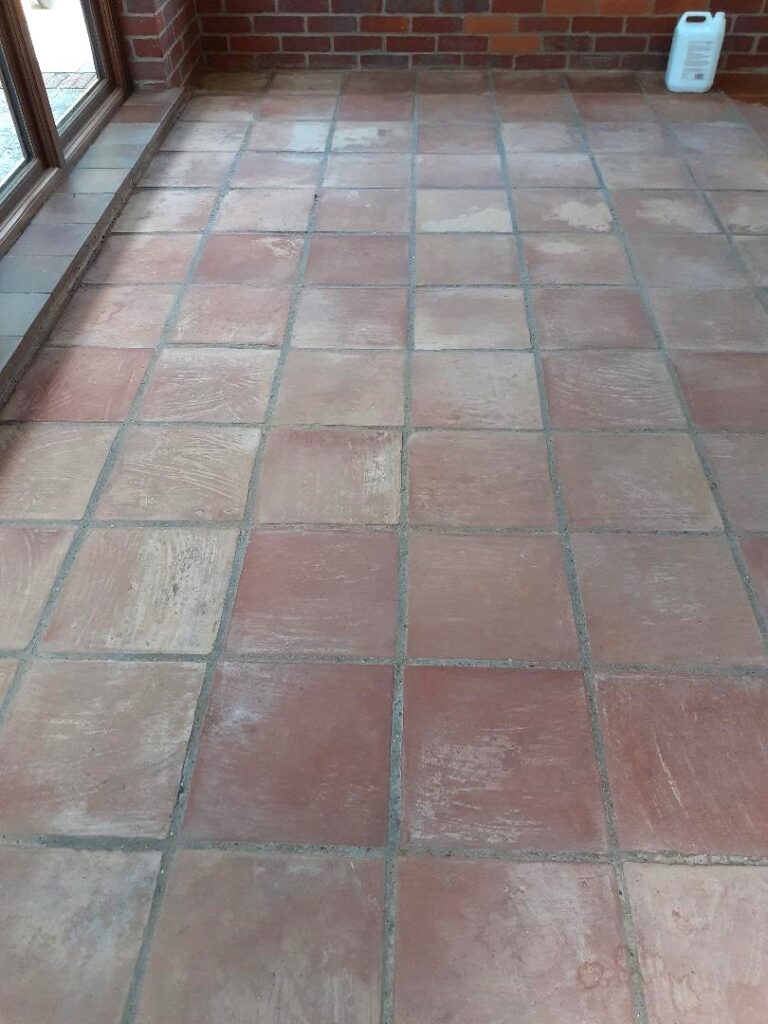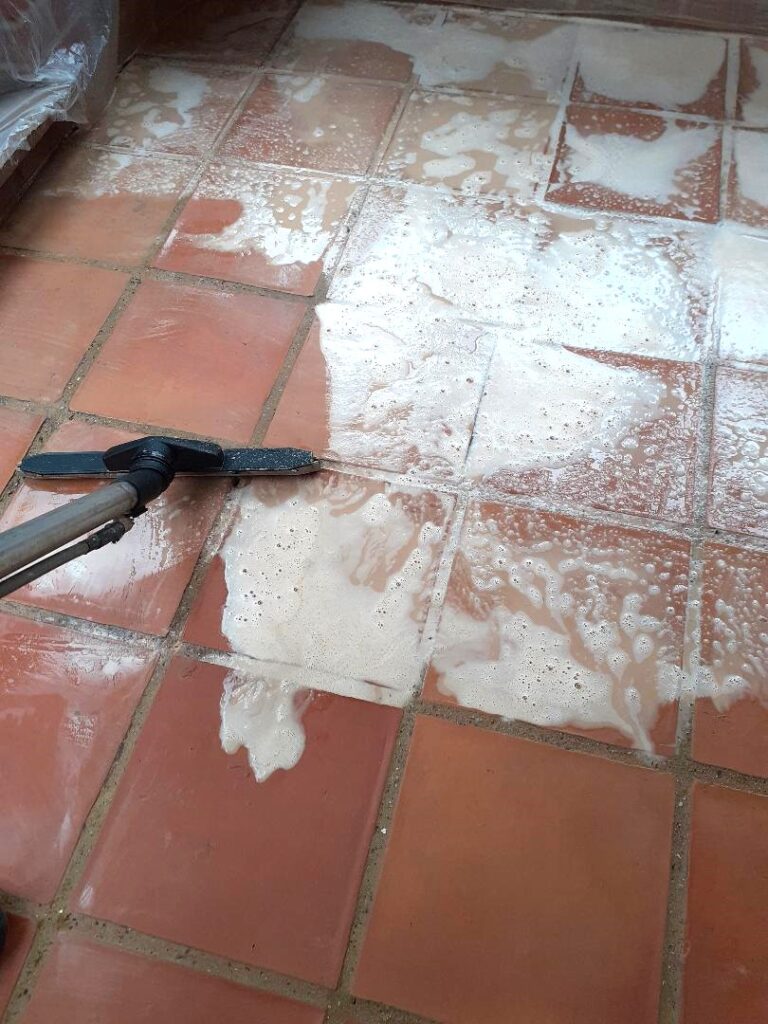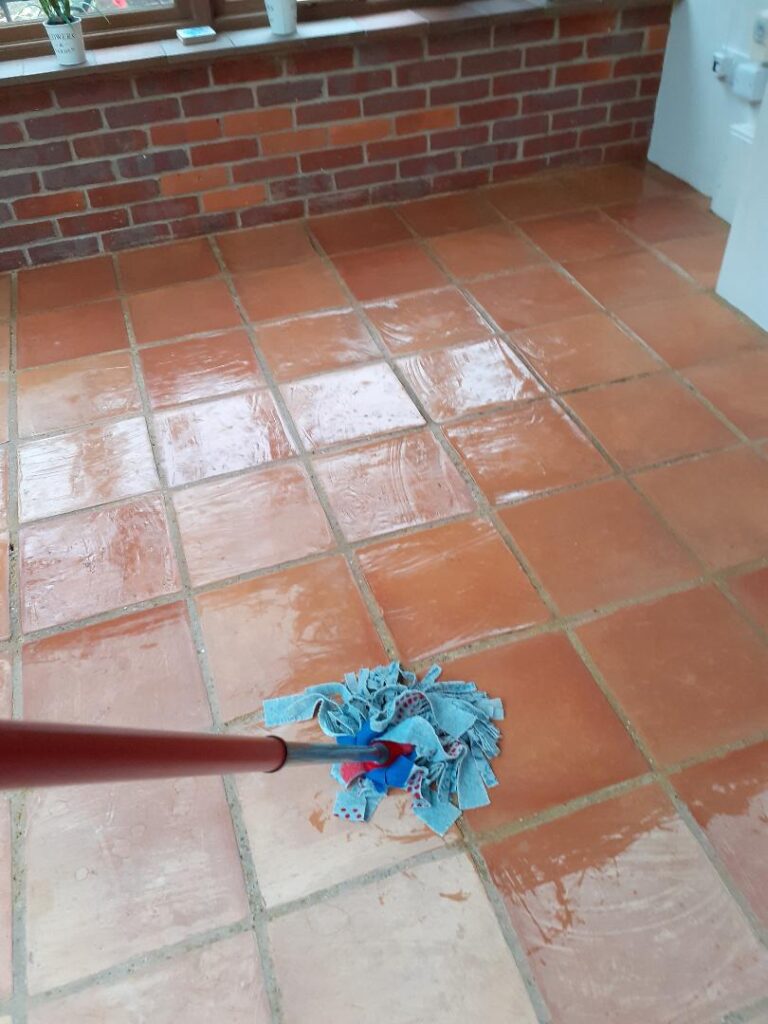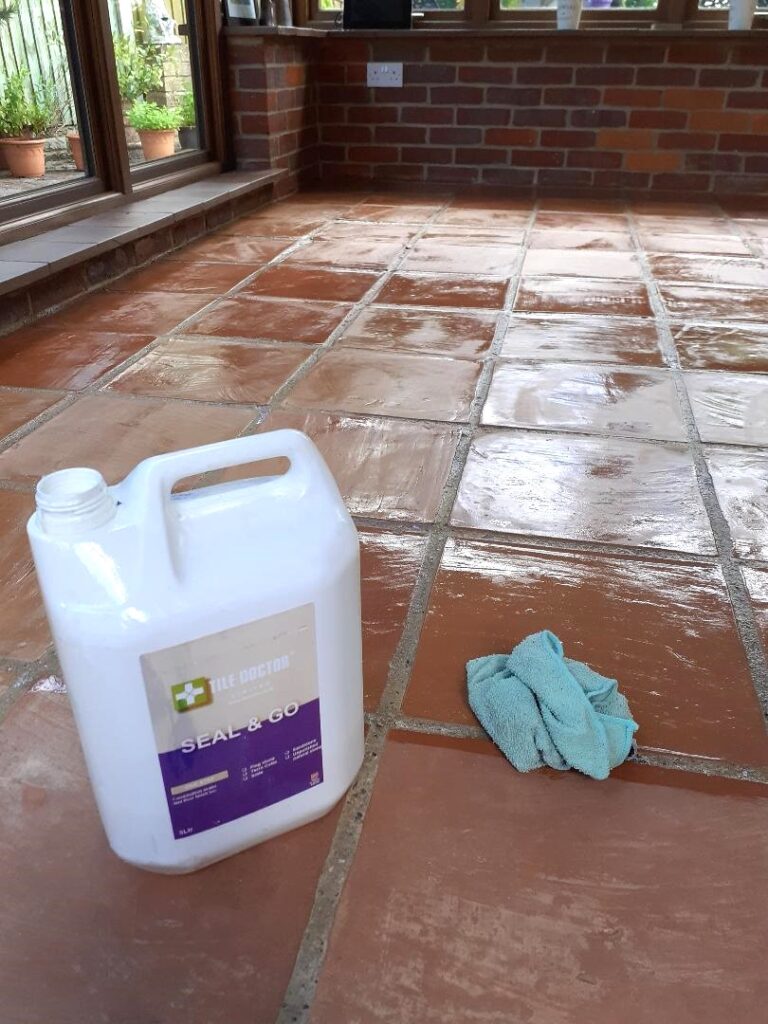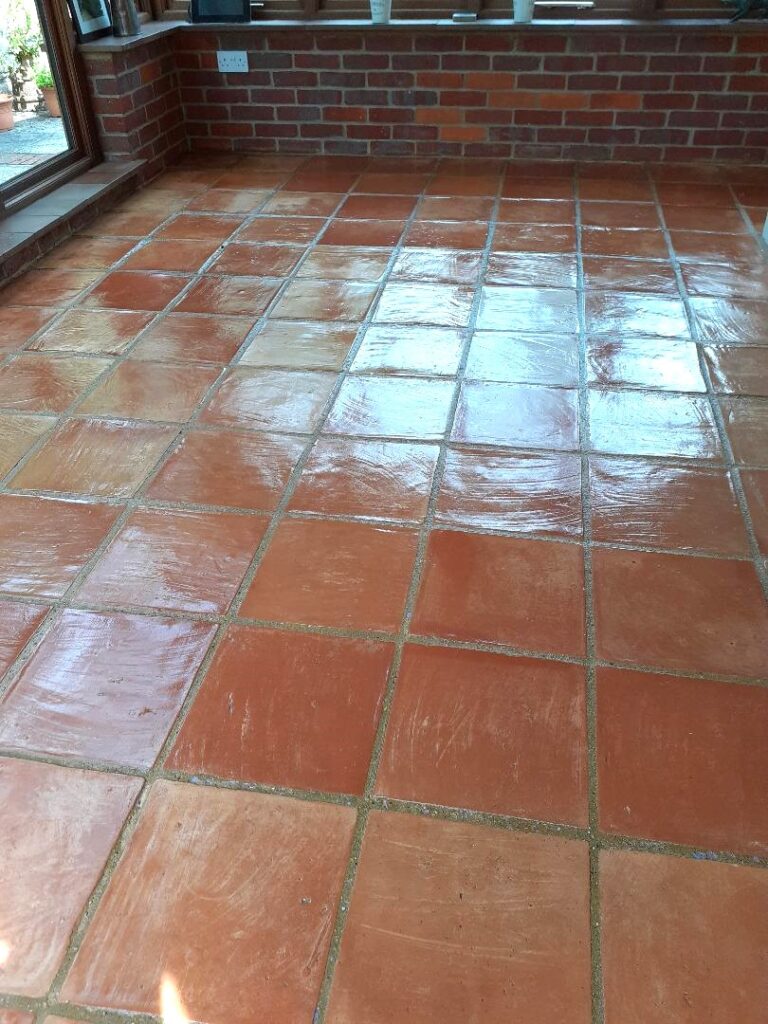Grubby Unfilled Travertine Hallway Floor Renovated in Earlham
This client from the Norwich suburb of Earlham got in touch earlier this year for help with their Travertine hallway floor. The travertine was the unfilled variety and overtime the pits which are a natural feature of travertine became magnets for dirt which the owner had struggled to remove.

I’ve included a photograph above where you can see just how heavily soiled the deep pits had become, resulting in very dark and un-attractive staining. Less evident from the photograph were several light scratches hiding under the dirt that the client also wanted addressing.
Sometimes I can quote for the renovation of a floor from photographs and measurements but in this case, I felt it best to do a detailed survey of the tiles to understand the full nature of the work that would be needed and the clients’ expectations.
I quoted for deep cleaning the travertine tiles and grout lines, burnishing the stone to remove surface scratches, filling the larger pits and then finally sealing the floor to give a low-sheen finish that they wanted. Happy with the comprehensive plan and confident I was able to produce the result they wanted, the quote was agreed and a date set.
Renovating a Pitted Travertine Tiled Floor
To get the floor clean I started by focusing on the grout lines which were sprayed with a strong dilution of Tile Doctor Pro-Clean and left it to soak for ten minutes. Then using a long-handled grout brush the solution was vigorously scrubbed into the grout lines to release the dirt.
Next, attention turned to the Travertine tiles which were sprayed using the same Tile Doctor Pro-Clean solution. Again, I waited ten minutes before scrubbing in the solution but this time I used a heavy 40kg Klindex rotary machine fitted with an additional 20kg of weight and a coarse 60-grit carbide brush. All this weight ensures excellent traction with the floor and maximum contact with the pad to release all the dirt. The resultant slurry was then extracted with triple-vac Klindex wet vacuum. As you can see, I’m a fan of having the right equipment for the job as it saves time and guarantee’s the best outcome.
The floor was then inspected; any stubborn areas were treated with more Tile Doctor Pro-Clean and hand scrubbing until I was confident the Travertine tile and grout was as clean as it could be.
To further improve the floor and remove light scratches I went over each tile with a 400-grit burnishing pad worked in with honing powder and lubricated with water to produce a low-sheen finish. Once done the larger pits were filled with BAL Jasmine flexible fine-joint grout which was a good colour match to the beige travertine tiles.
Sealing Travertine Floor Tiles
The floor was allowed to dry overnight, and I returned the next day to seal with two coats of Tile Doctor Colour Grow which has a colour enhancing formula that helps to bring out the brown tones in the Travertine. It is also a hard-wearing impregnator that works by filling the pores in the stone to ensure dirt remains on the surface where it can be easily cleaned away with a pH neutral tile cleaner like Tile Doctor Stone Soap.

The floor looked so much cleaner and lighter once complete, and the now filled pits will prevent the accumulation of dirt. My client was impressed and delighted with their better-than-new pristine travertine floor which will prove much easier to maintain going forward.
On the topic of maintenance cleaning, I recommended the use of another Tile Doctor product called Neutral Tile Cleaner which is a neutral Ph cleaner that’s safe to use on sealed floors.
Professional Restoration of a Travertine Tiled Hallway in Norwich
Grubby Unfilled Travertine Hallway Floor Renovated in Earlham Read More »


